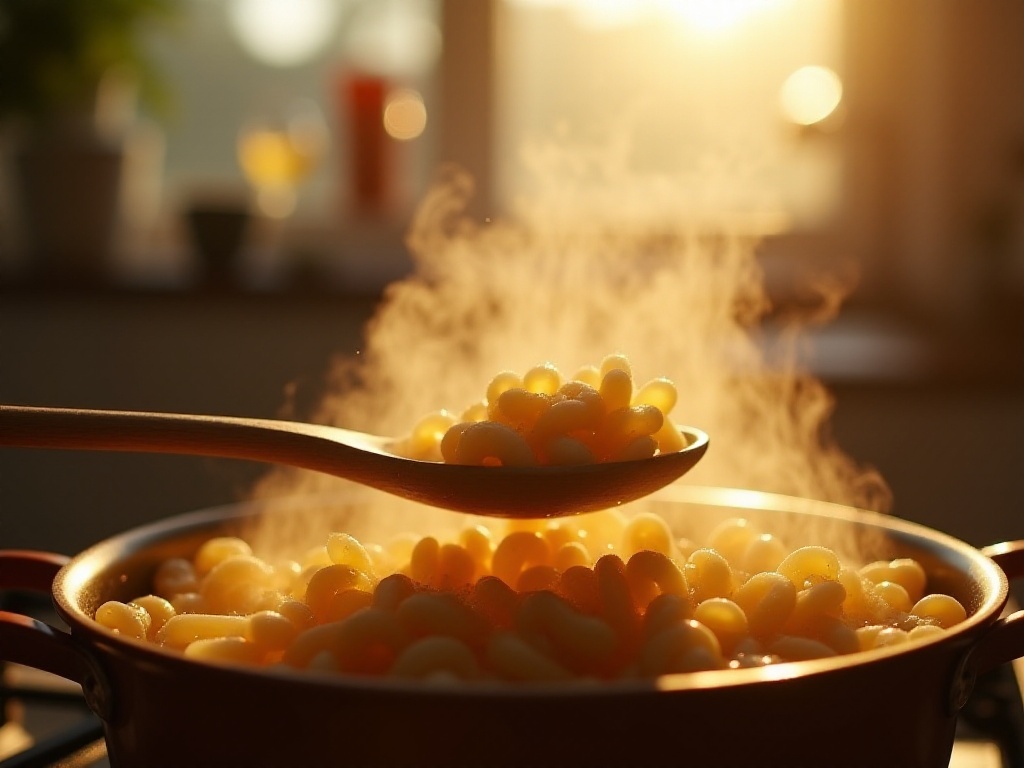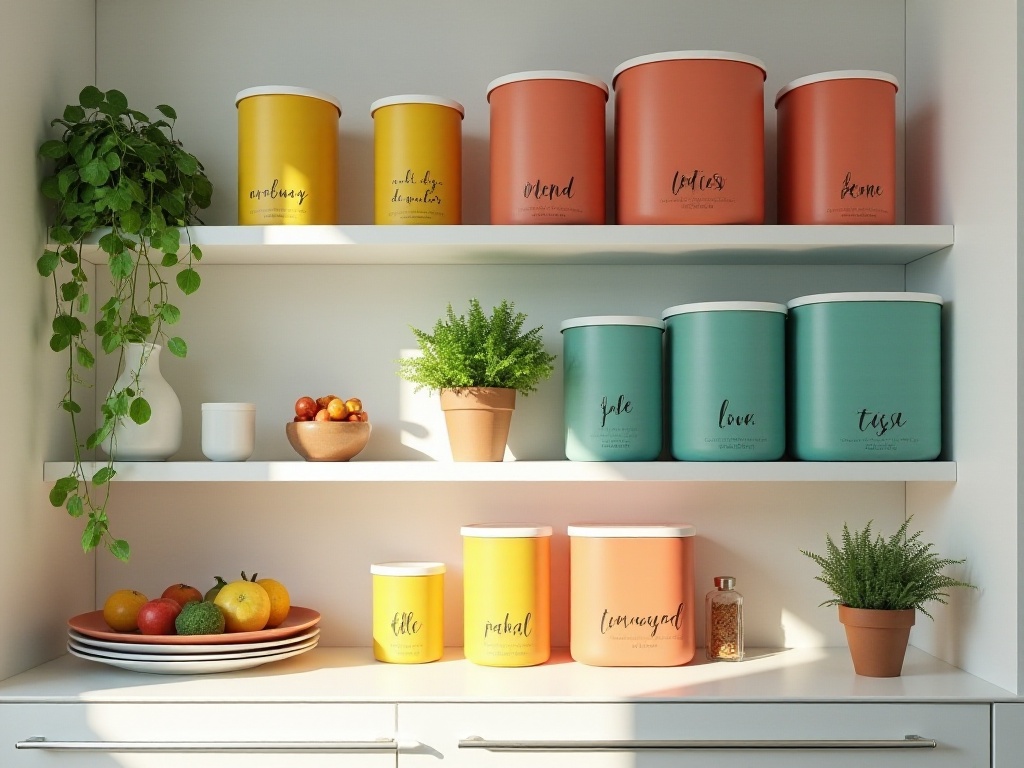Introduction
As a post-95s generation who was always shooed out of the kitchen by mom, I truly started cooking from scratch. When I first lived alone, I could even make a mess of cooking instant noodles, let alone prepare a proper meal. But after years of trial and error, I finally evolved from someone who couldn't even fry an egg properly to becoming a "culinary expert" in my friends' eyes. Today, I'd like to share the pitfalls I've encountered and the experience I've gained, hoping to help more friends who, like I used to be, are terrified of cooking!
Cooking Basics
I remember my first disastrous attempt at boiling noodles - the water suddenly boiled over, splashing everywhere and making a mess of the entire stovetop. I wondered why restaurant chefs never seemed to have this problem. Later, while watching a cooking video, I discovered an incredibly useful tip - placing a wooden spoon across the pot. This was a lifesaver! The wooden spoon breaks the water's surface tension, causing troublesome foam to collapse promptly, perfectly preventing boil-overs. Since learning this trick, I never worry about cleaning the stove anymore - it's absolutely fantastic!
Speaking of kitchen cleanup, I have deep experience with this. When I first started cooking, my kitchen would look like a battlefield every time, with oil stains and food scraps everywhere, taking over an hour just to clean up. Later, I figured out a good method - clean as you cook. For example, while waiting for soup to boil, I would return used seasonings to the spice rack and wash the cutting board and knives. By the time the dish is done, the kitchen is mostly cleaned up. This not only keeps the kitchen tidy but also greatly improves cooking efficiency.
Has this happened to you: following recipe proportions exactly, but the final taste is still slightly off? After countless trials and failures, I discovered that seasoning actually follows patterns. Take stir-fried vegetables for example - many people habitually sprinkle salt directly on the vegetables, which often leads to uneven seasoning. The correct method is to first dissolve the salt in a little hot water, then pour it evenly over the vegetables during the final reduction. This not only distributes the saltiness more evenly but also helps vegetables maintain their beautiful green color.
Oh, speaking of seasoning, I want to share another super useful tip. Many people don't know how much seasoning to add when cooking, resulting in dishes that are either too bland or too salty. There's actually a simple solution - prepare a set of measuring spoons. I usually keep 1-gram, 2-gram, and 5-gram spoons. This way, you can be confident when seasoning and won't feel flustered. After a few attempts, you'll find the measurements that suit your taste preferences.
Another basic technique I find particularly important is the order of ingredient preparation. I used to cut ingredients randomly as I thought of them, often ending up with a cutting board full of various ingredients, not knowing what to cook first. Now I make a list of all needed ingredients and arrange the cutting order according to cooking time. For example, when making stir-fried peppers with shredded pork, I'll wash and slice the peppers first and set them aside before handling the meat. This not only improves efficiency but also prevents ingredients from spoiling due to waiting too long.

Beverage Tips
With summer arriving, many friends enjoy making various cool drinks at home. But regular ice cubes gradually dilute the drink's flavor as they melt, which really affects the taste. Later, I discovered a fantastic alternative - using frozen grapes instead of ice cubes. Whether it's chilled juice or sparkling water, they maintain their original taste without dilution. Plus, the grapes themselves add a hint of fruity sweetness - it's absolutely brilliant!
Speaking of beverages, I want to share a super money-saving tip. Ever feel wasteful when you see almost-empty jars of peanut butter or chocolate spread? These leftover sauces can actually be fully utilized. Just add some room-temperature milk and shake vigorously - it instantly becomes a delicious milkshake. I've used this method many times, and the results are absolutely amazing! Plus, homemade milkshakes are not only healthy and additive-free but also save quite a bit of money on buying drinks.
Oh, I recently discovered a tea-brewing trick too. Many people enjoy tea but often find their brewed tea either too weak or too bitter. There's actually a technique to brewing tea - the key is controlling water temperature and steeping time. Green tea is best with 80-degree water, steeped for 2-3 minutes; black tea needs 95-degree boiling water and can steep for 3-5 minutes. If you don't have a thermometer, there's a simple way to judge: after water just boils, waiting 3-5 minutes gives you the perfect temperature for green tea; for black tea, use the water when small bubbles appear.

Storage Solutions
When it comes to kitchen storage, I have so many insights to share. First and most important is the "one in, one out" principle. Whenever I buy new kitchenware or tableware, I clear out an old piece. This not only prevents kitchen clutter but also encourages me to timely update tools that aren't working well anymore. For example, when I recently bought a new non-stick pan, I disposed of the old pan that had been used for two years and was starting to lose its coating.
Label management is also one of my essential skills. I label all storage containers with contents and storage dates. This makes it easy to see everything in the fridge at a glance, without worrying about distinguishing the freshness of ingredients. I now use erasable labels, which are particularly convenient for reuse. I also note expiration dates on the labels, preventing ingredients from spoiling due to forgetfulness.
Speaking of storage, many people struggle with cluttered spice bottles and containers. My solution is to store seasonings by category. Frequently used seasonings like salt, sugar, and soy sauce are placed within easy reach; less frequently used spices or sauces can go on the second shelf. Additionally, I regularly check seasoning expiration dates and promptly clear out expired products. This not only keeps the kitchen tidy but also ensures seasoning freshness.
Drawer organization is also an art. I've seen many kitchen drawers that open to reveal a jumble of cutlery and utensils. With just a little organization, drawers can become neat and orderly. My method is to use drawer dividers to separate different types of items. Knives, forks, and spoons each have their own compartments, and measuring spoons and bottle openers have designated spots. This way, you don't have to rummage through everything to find what you need.

Item Identification
Key identification troubled me for a long time. I used to try several times before finding the right key, especially troublesome when returning home at night. Later, I thought of using nail polish to mark different keys. Red for the front door key, blue for the storage room, green for the bicycle lock. This way, even in poor lighting, you can identify them by touch. Plus, nail polish color is long-lasting, so you don't have to worry about it wearing off.
Besides keys, I also use this method to distinguish various charging cables. With more and more electronic devices at home, all the charging cables look similar. I mark different device cables with different nail polish colors, so I never grab the wrong charger. This little trick is really practical - I recommend everyone try it!

Final Thoughts
Through these years of exploration and practice in the kitchen, I've deeply realized that there's wisdom waiting to be discovered everywhere in life. Many seemingly difficult problems can actually be solved with simple methods. Just like how I grew from a kitchen novice who would burn milk to someone who can prepare a table full of good dishes, this process has taught me that as long as you're willing to observe carefully, think, and try, anyone can become an expert in daily life.
Finally, I want to say that cooking is actually a very interesting thing. It not only teaches us how to take care of ourselves but also brings a sense of achievement and joy in the cooking process. I hope these tips I've shared can help more friends and let everyone enjoy the pleasure of cooking. Of course, everyone might have their own unique life hacks - welcome to share and discuss in the comments!
Remember, improving cooking skills isn't about instant success but about gradual progress day by day. As long as you maintain enthusiasm and patience, I believe you can quickly become a life expert in your friends' eyes!




